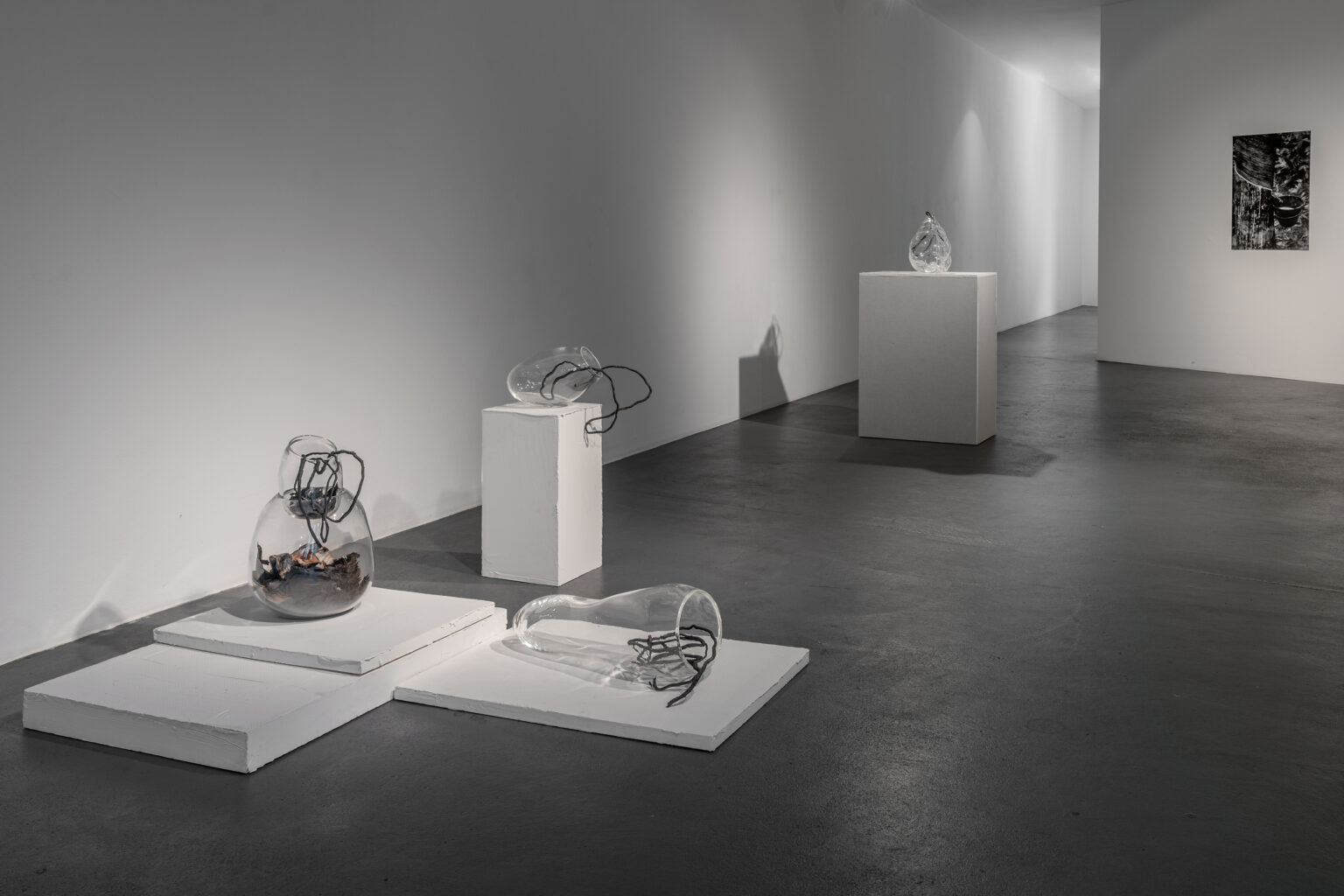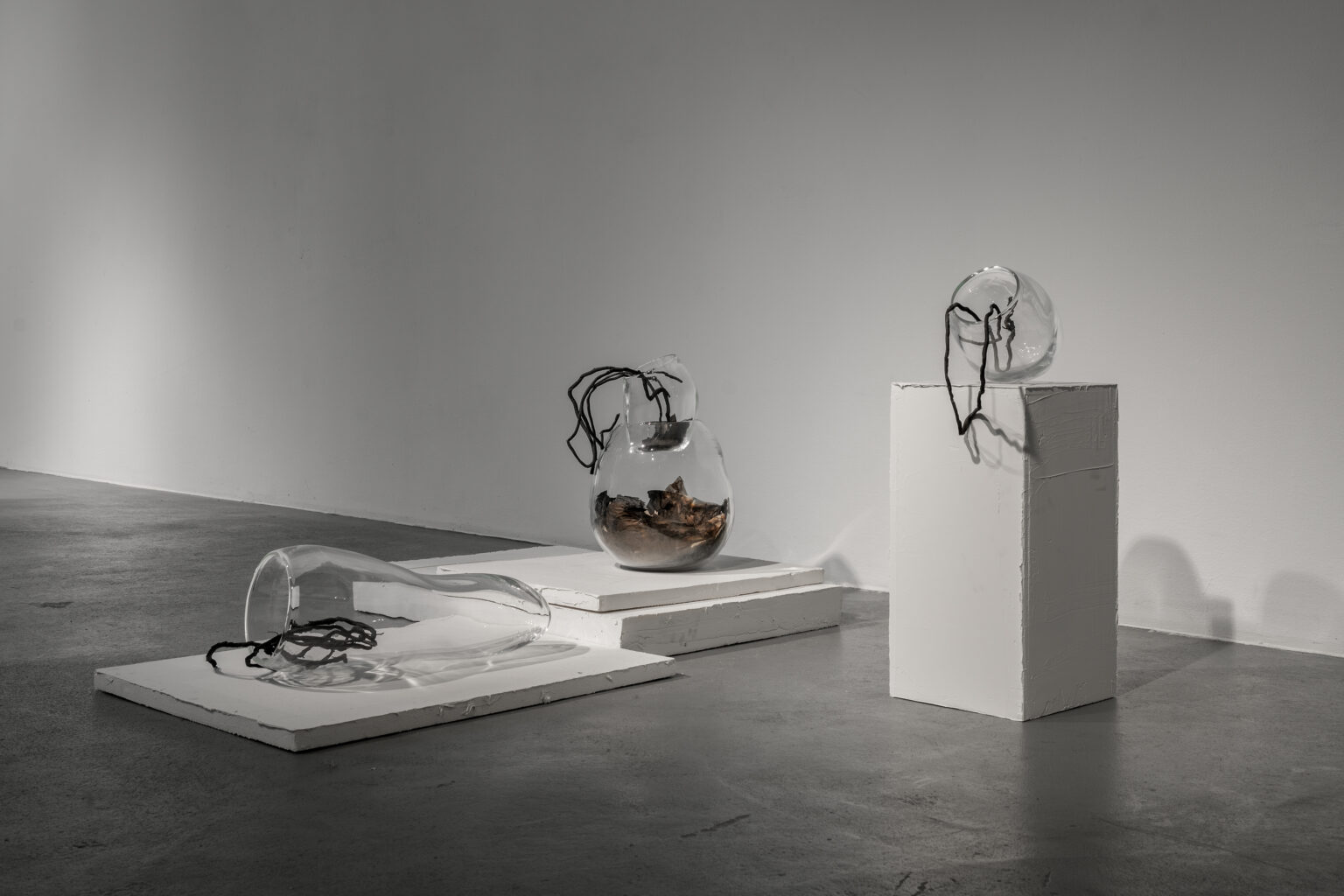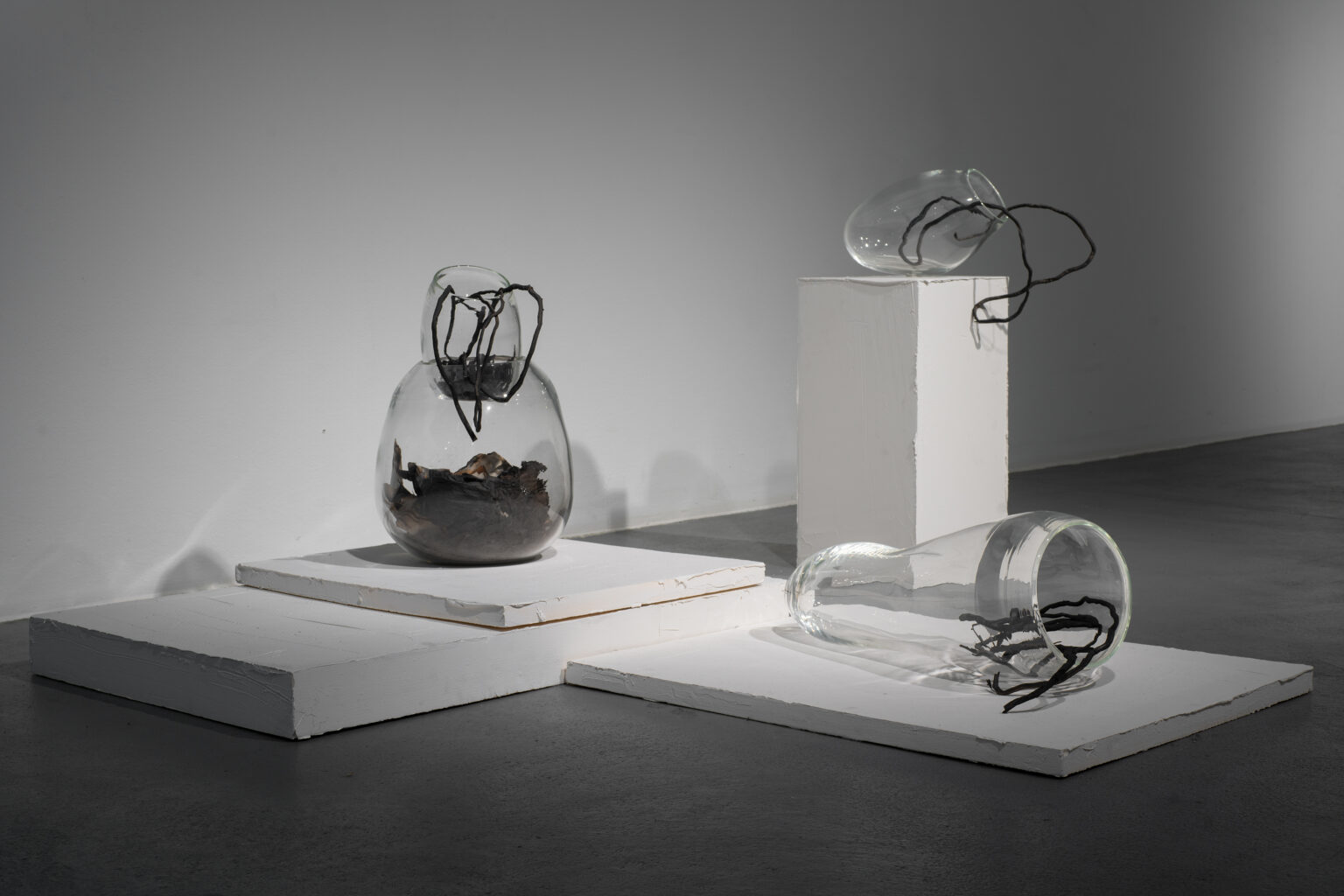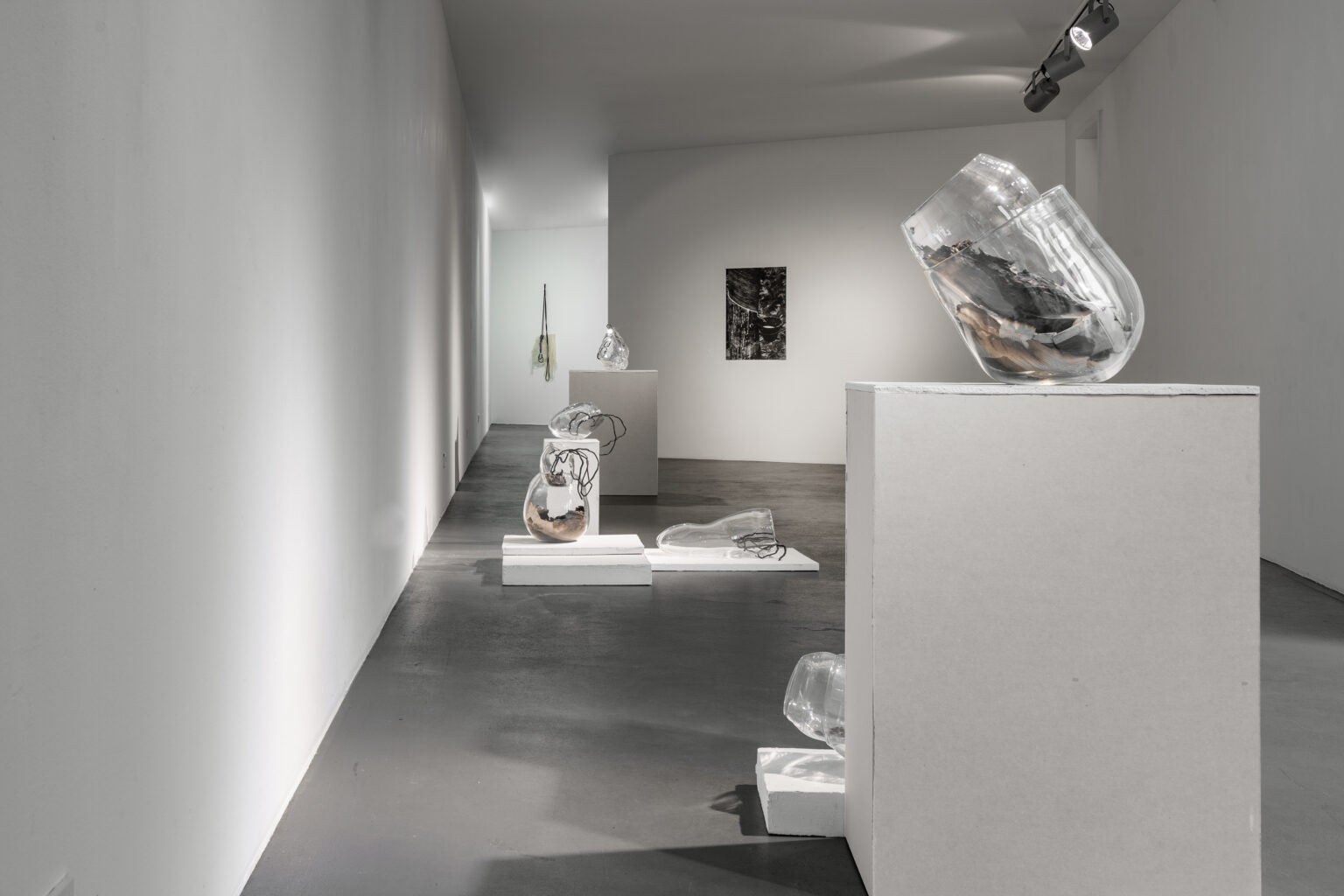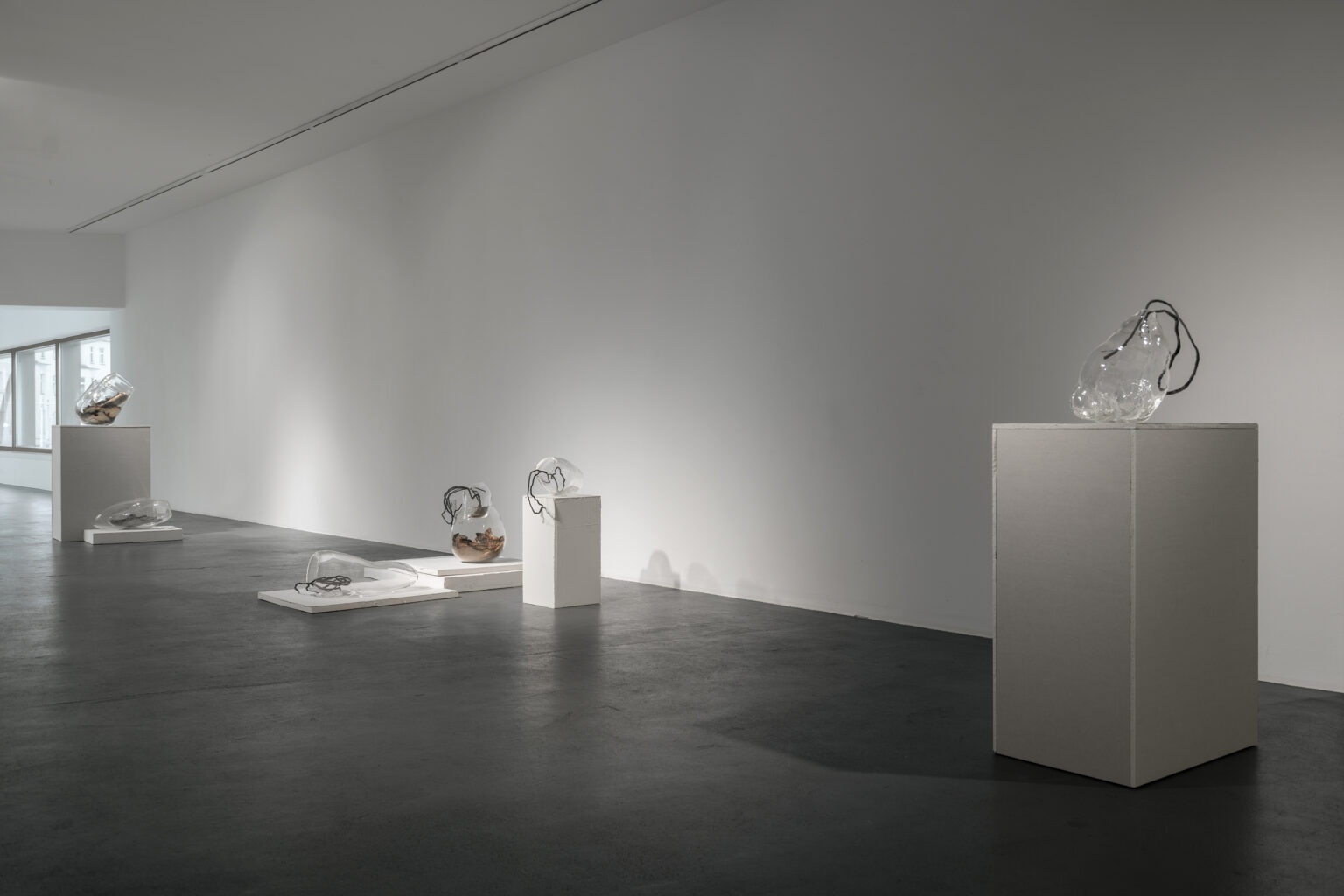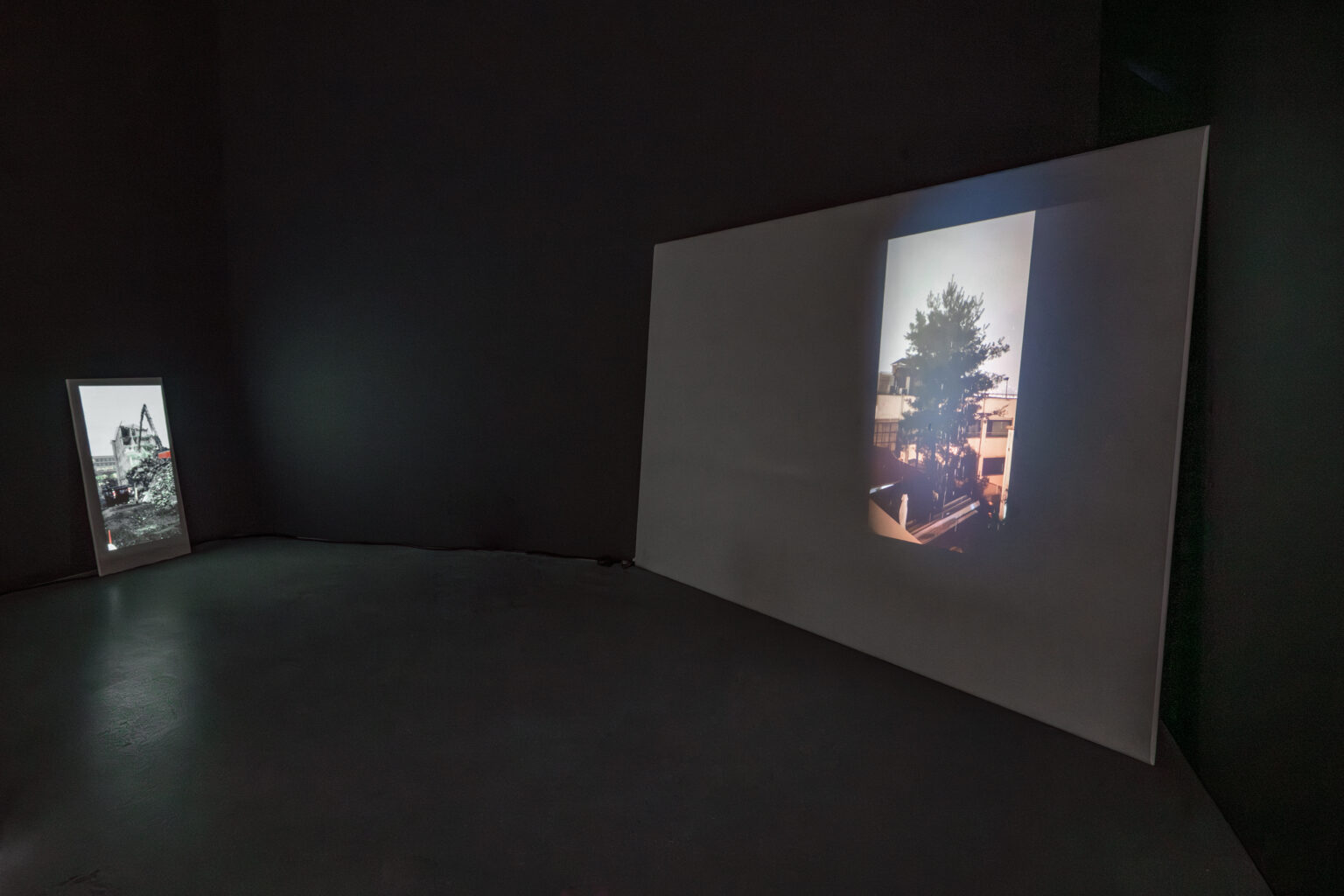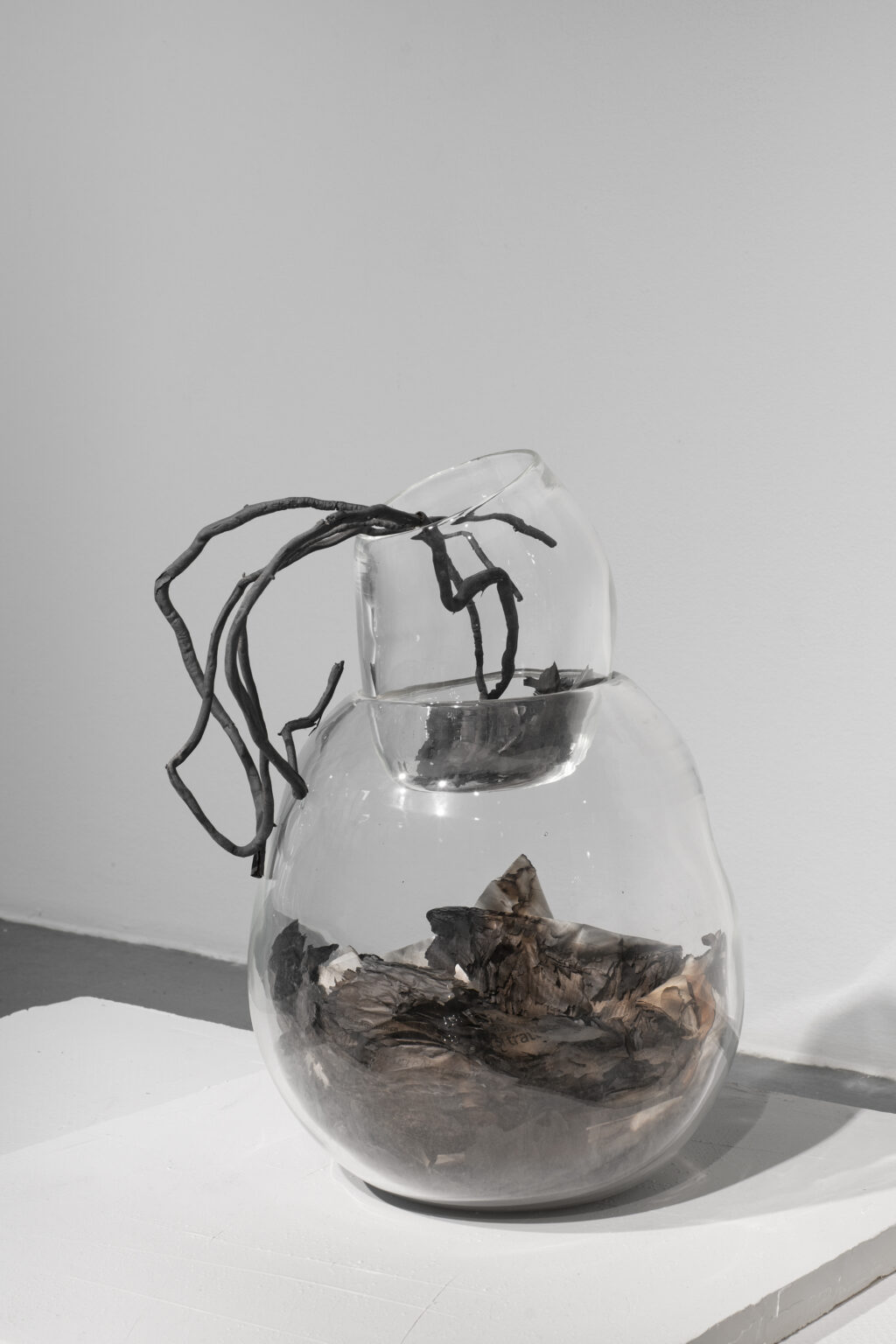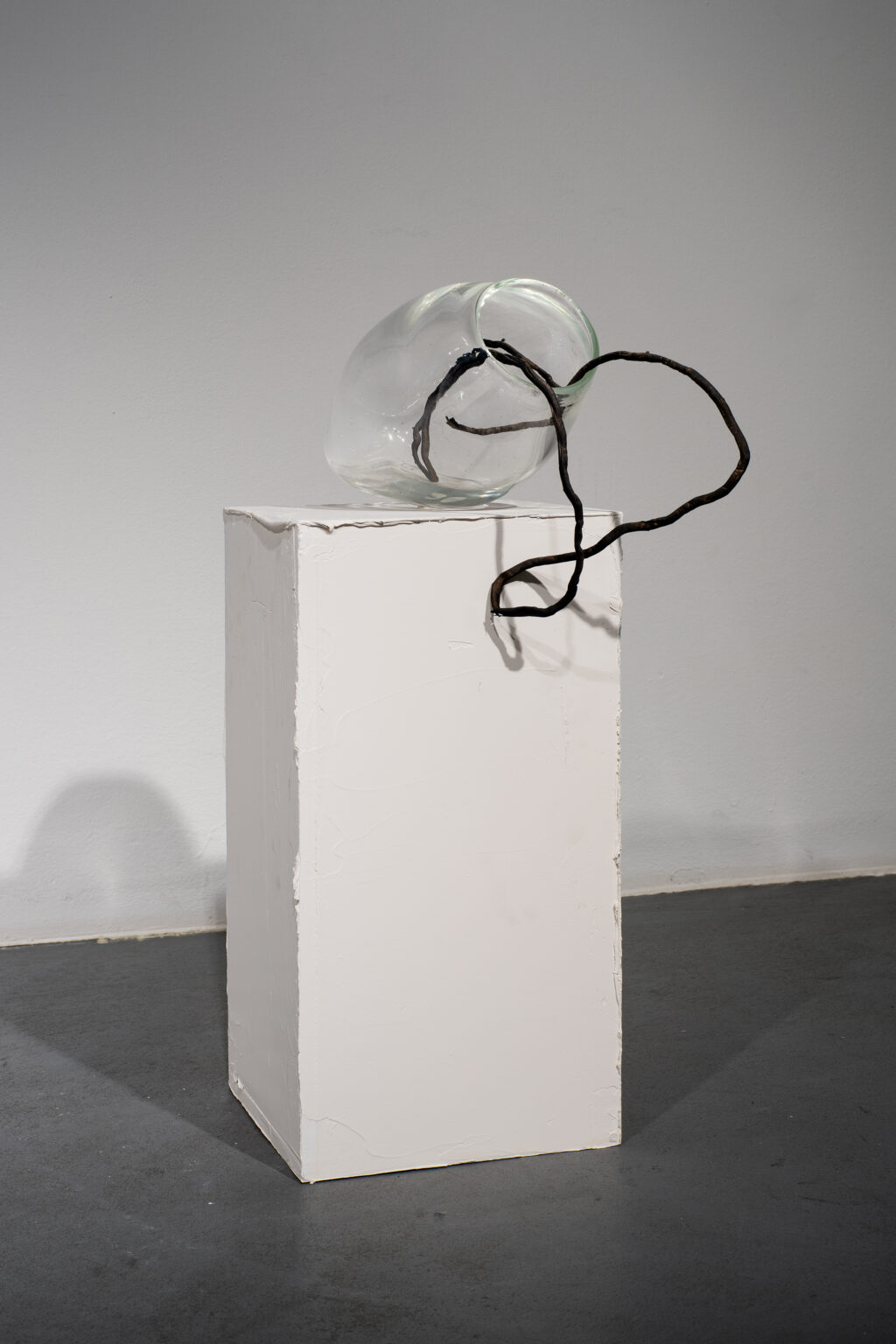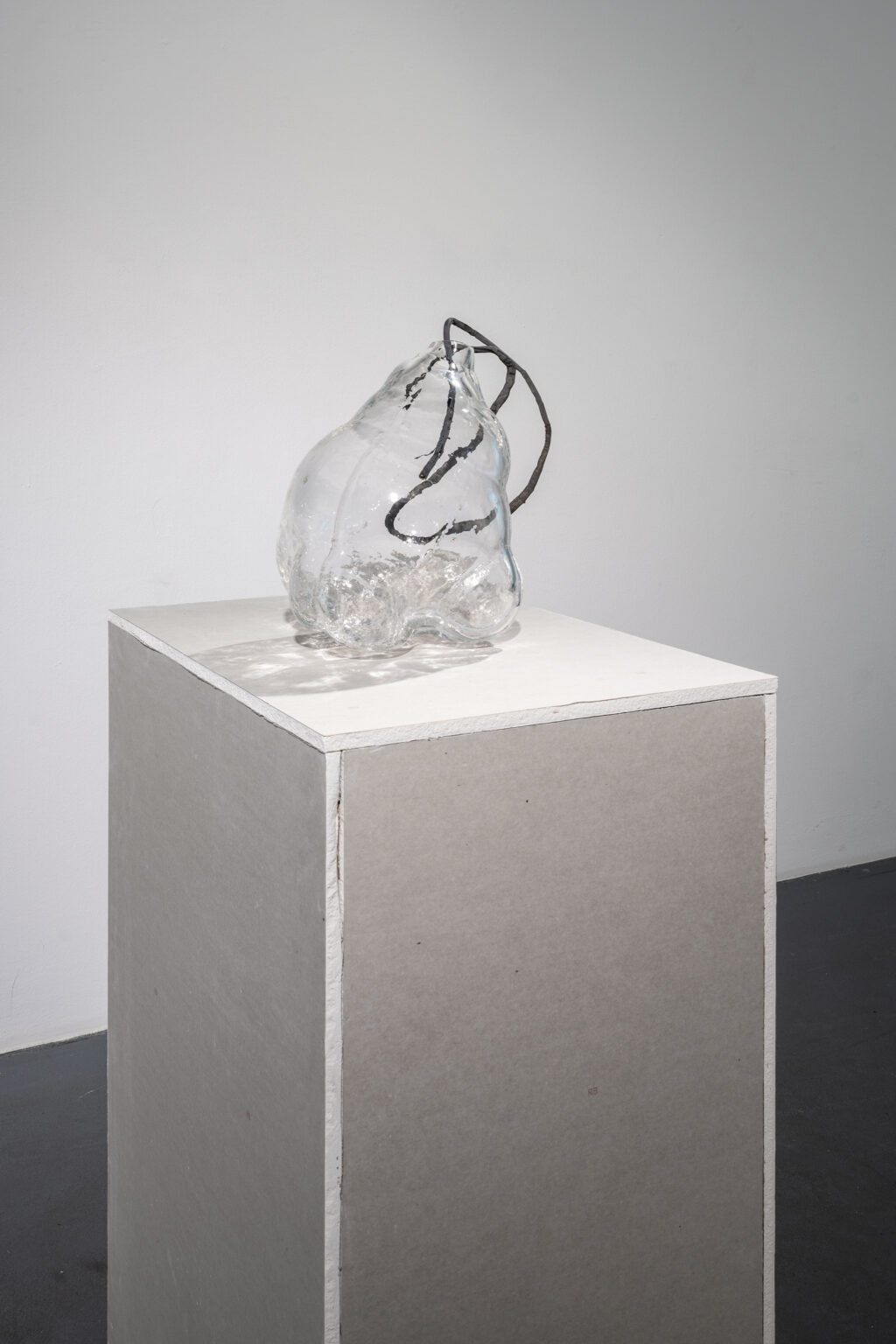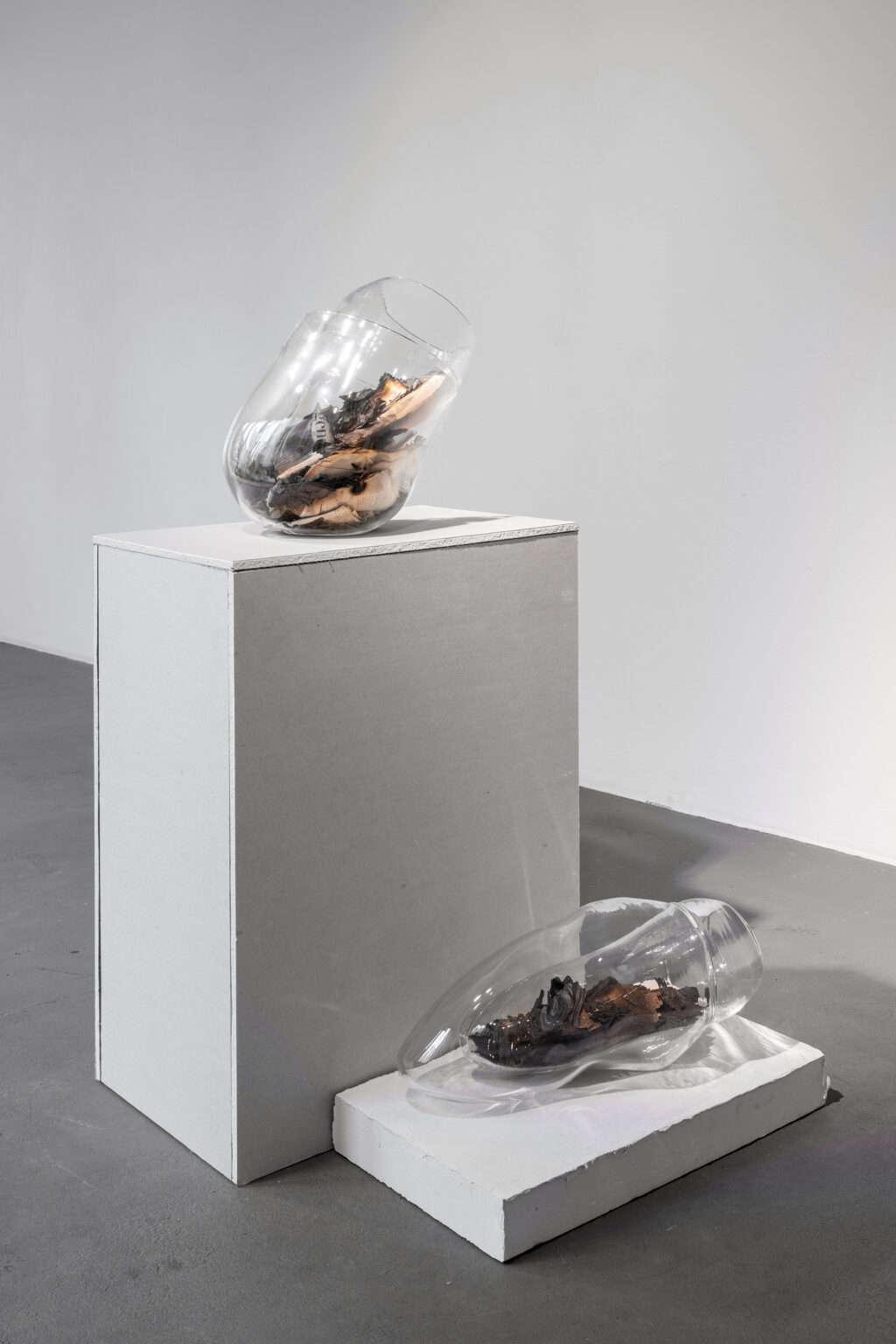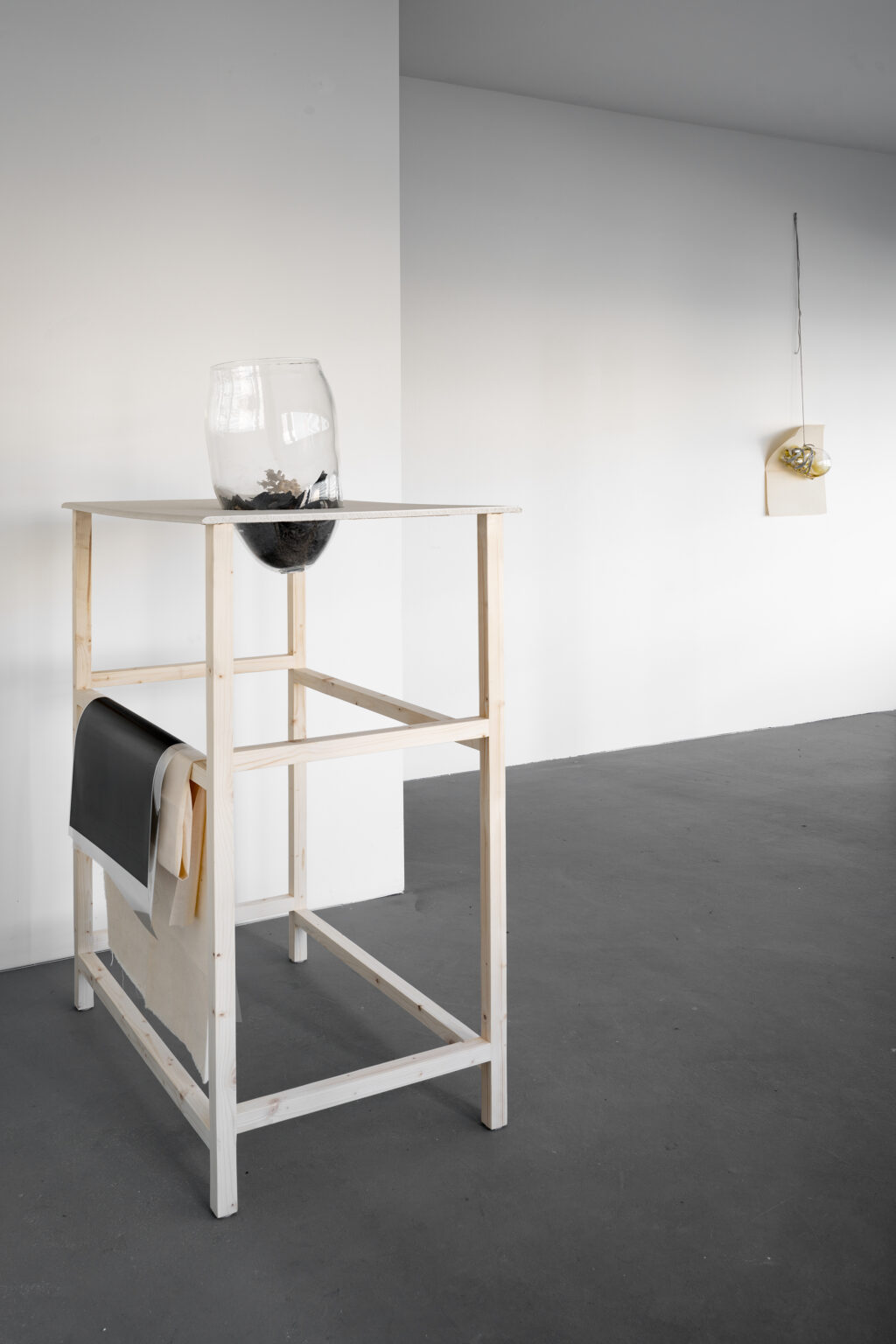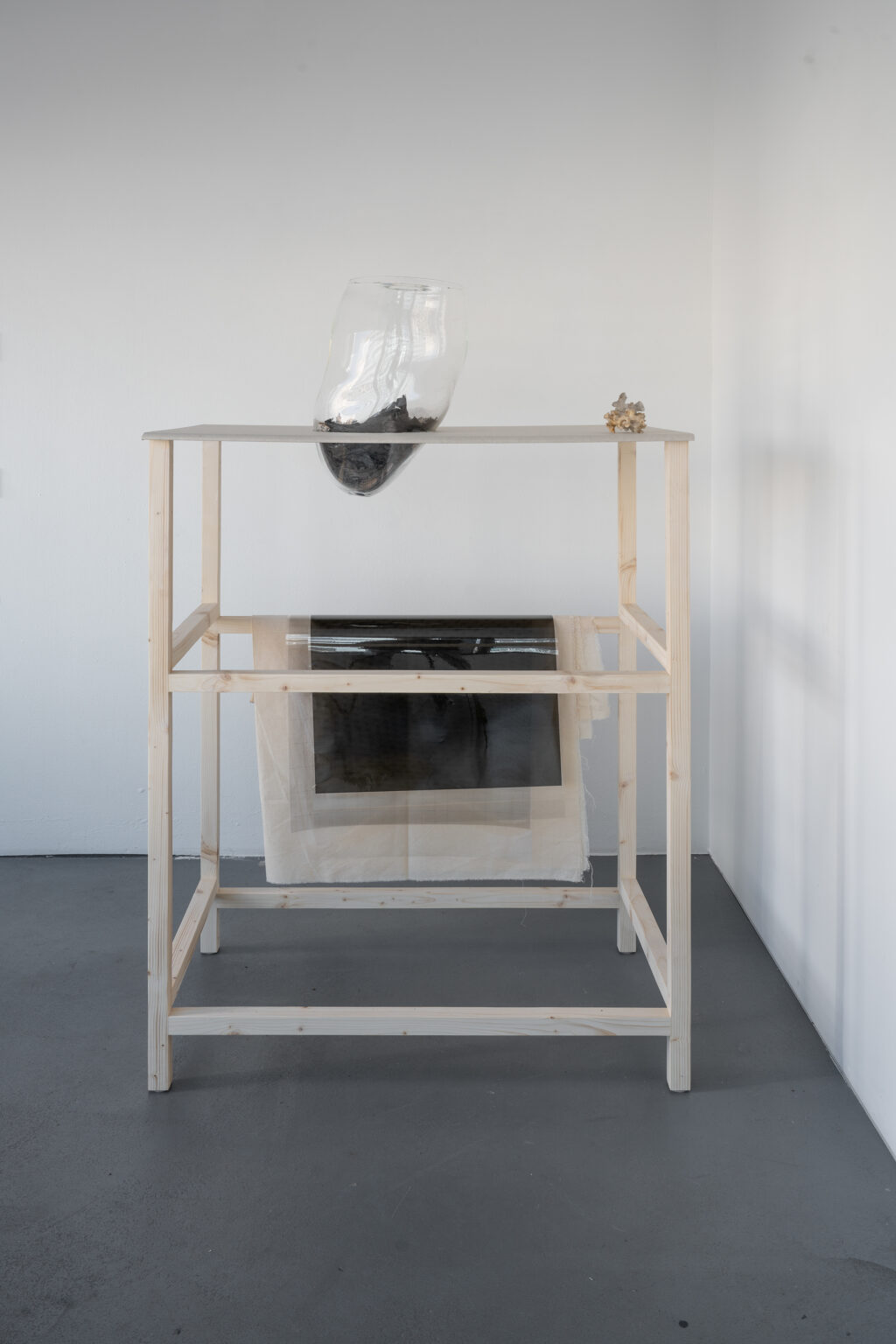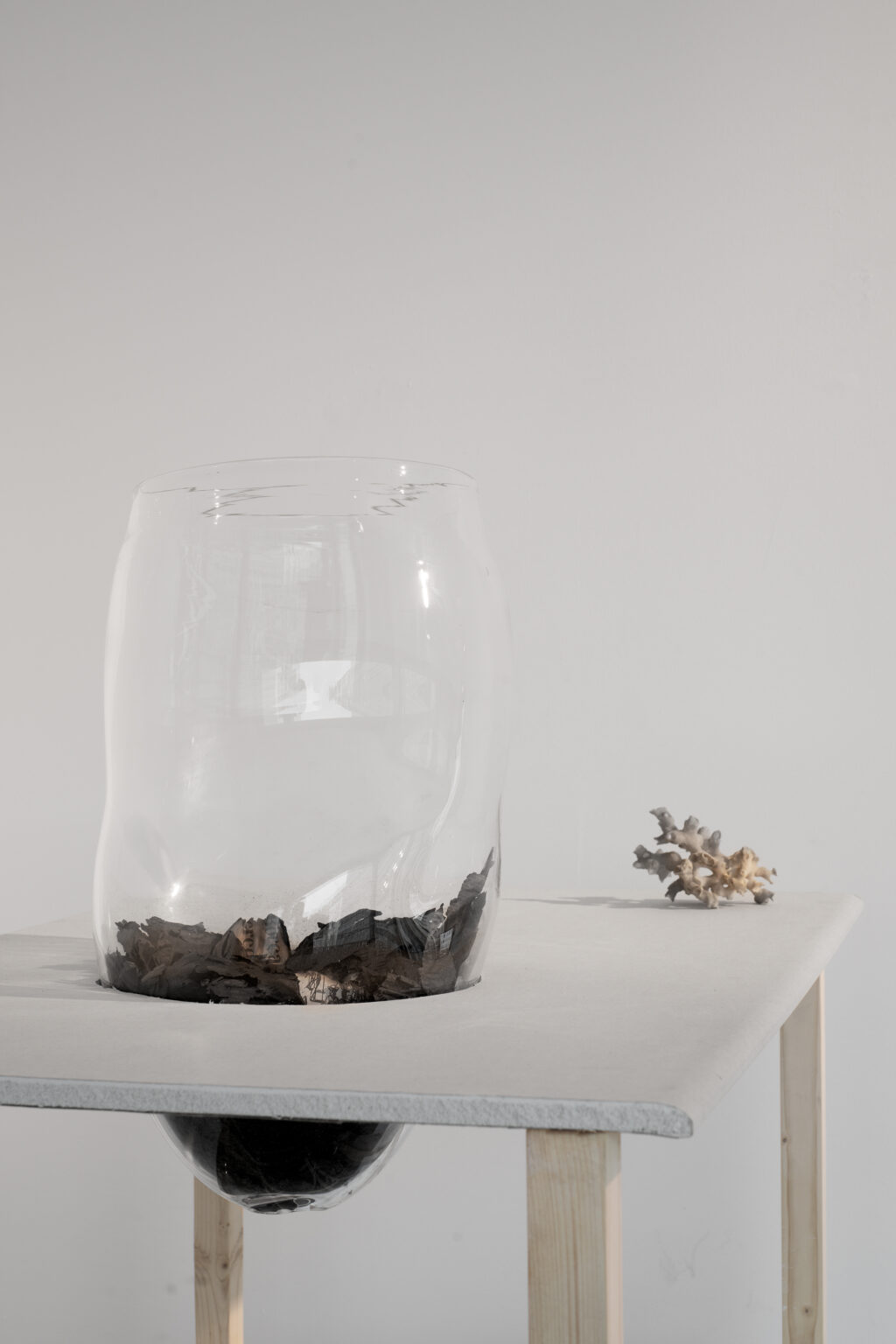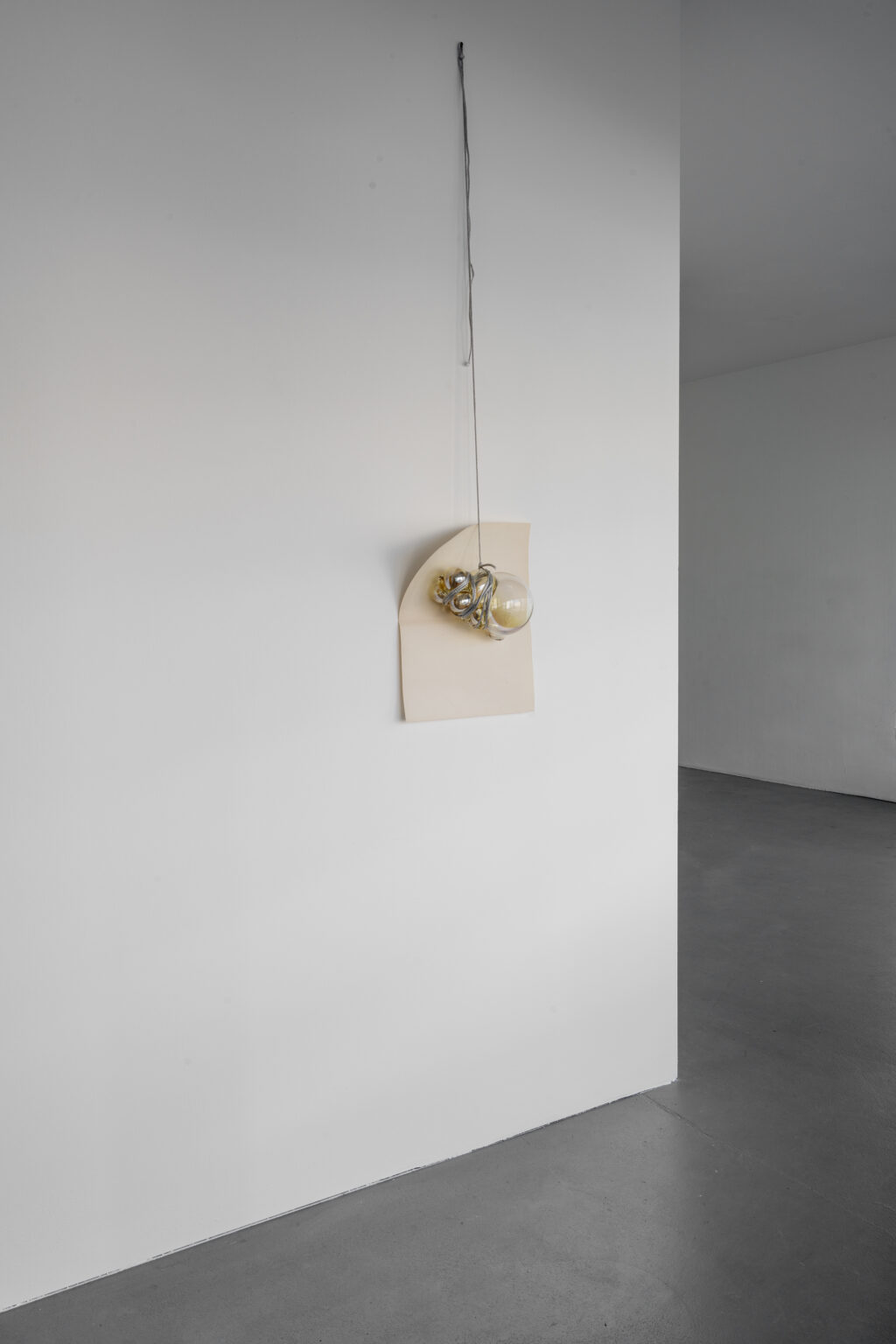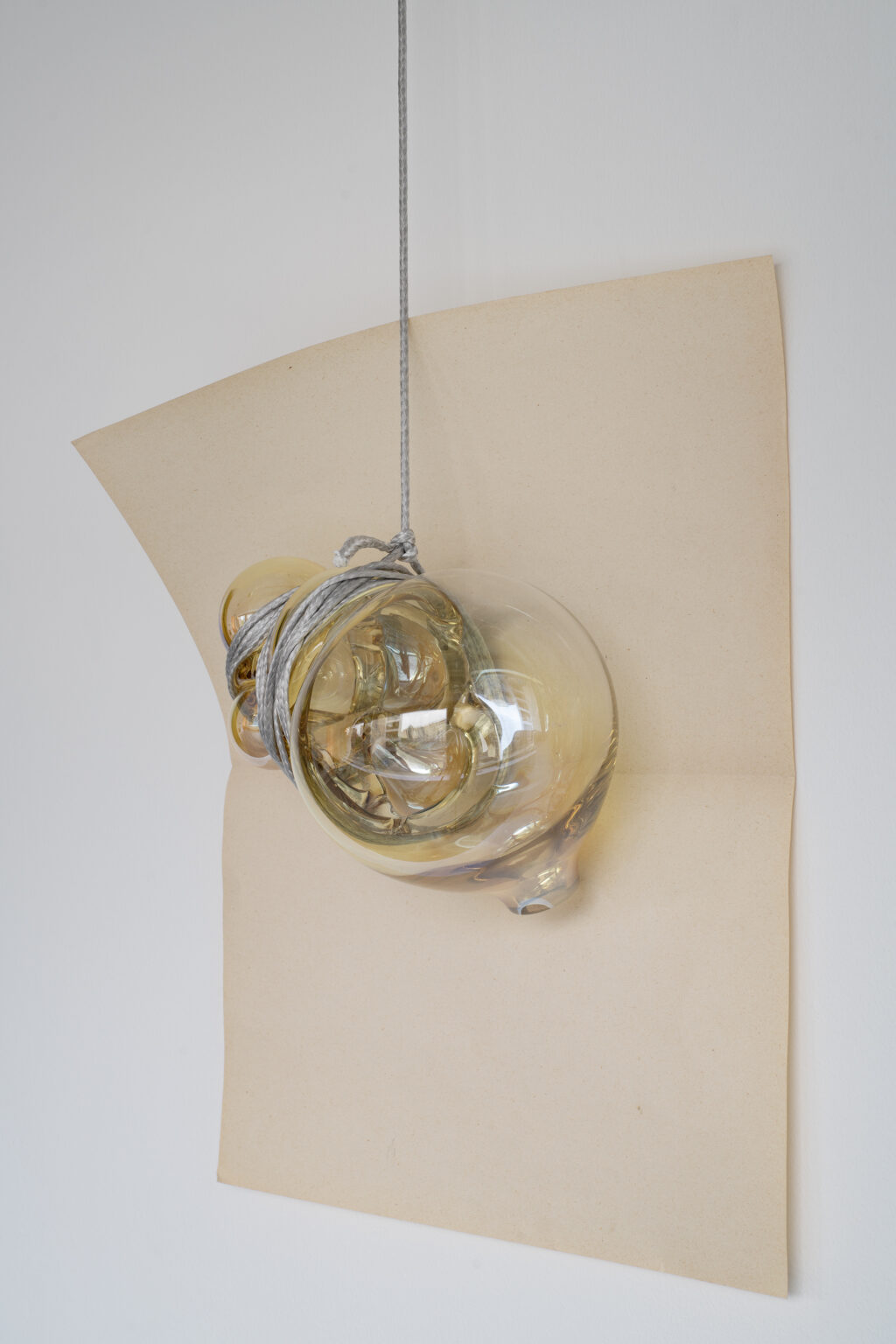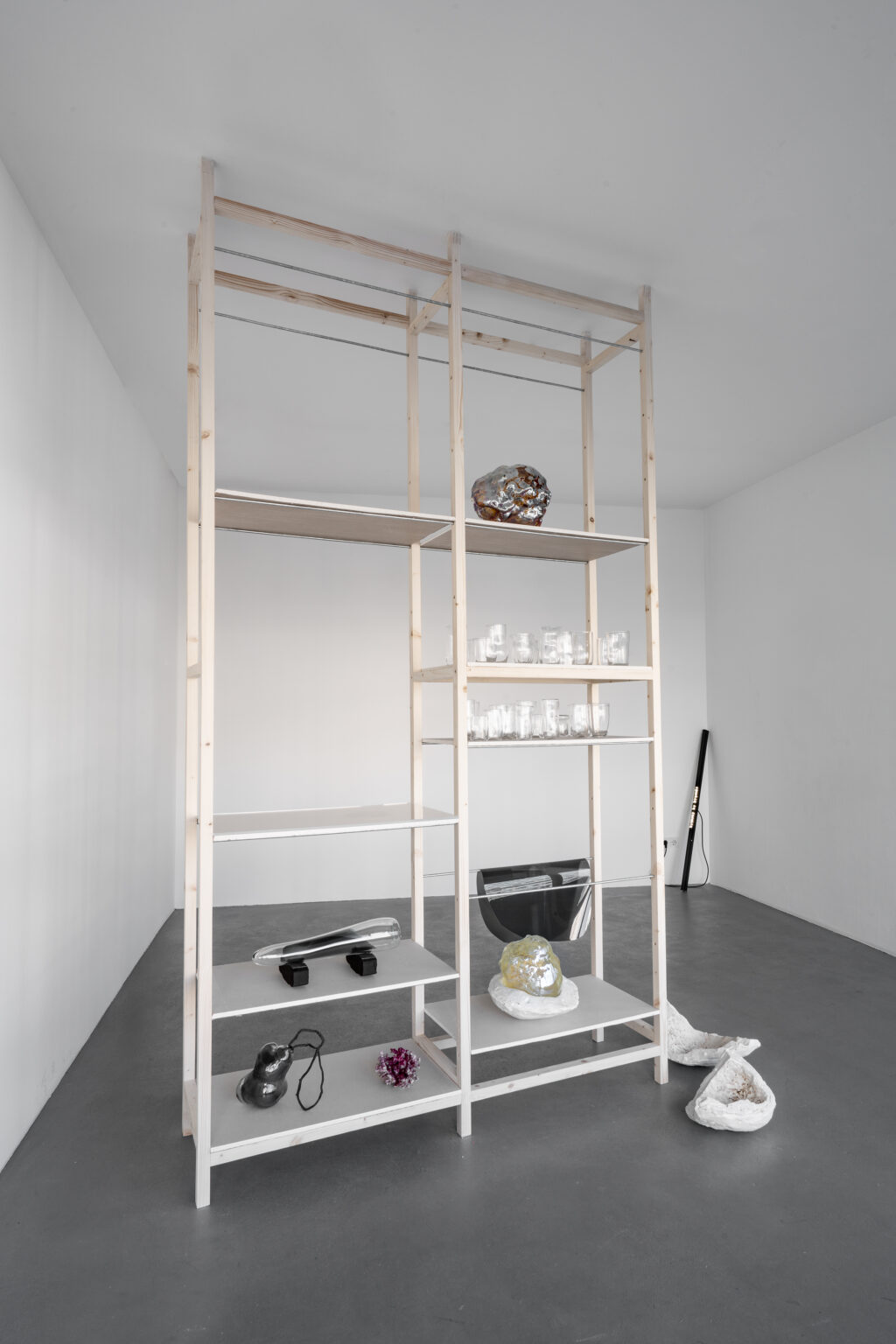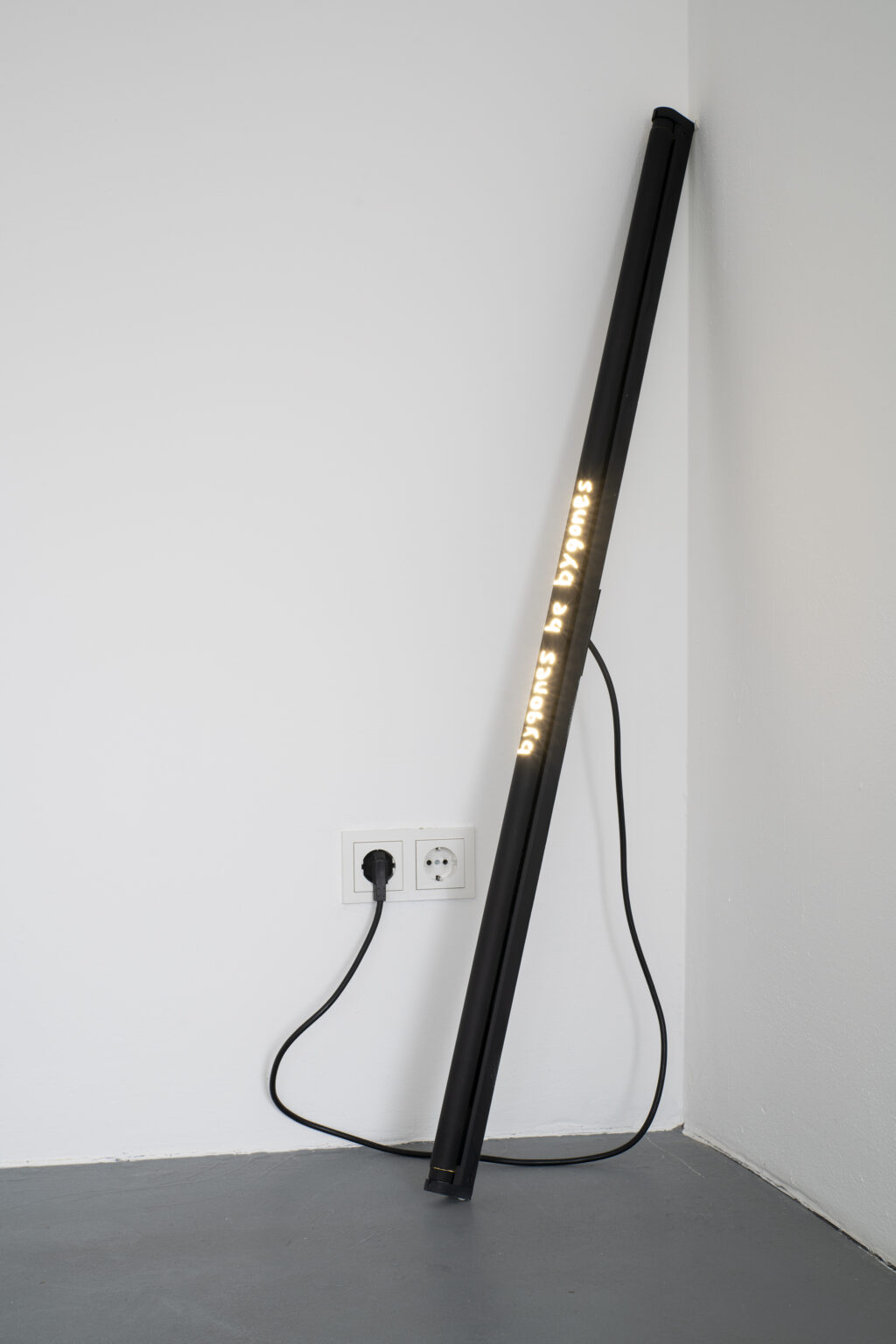Henrik Strömberg
“Bygones be bygones or: what’s hidden in the snow will come to light by thaw”
Curated by Chiara Valci Mazzara and Susanne Prinz
Kunstverein am Rosa Luxemburg Platz, Linienstraße, 40 – 10119 Berlin
Opening: April 27th 2023 – 6-9PM
Duration: April 28 – June 3 rd 2023
Opening hours: Thu. – Sat. 14-18 or by appointment
Performances program hosted by the Bygones be Bygones Bar:
Friday May 5 2023: Jens Soneryd
May 19 2023: K.Yoland
June 2nd 2023 : William Cody Maher
.Download the pdf to the exhibition: Bygones be bygones -exhibition
The show Bygones be bygones or: what’s hidden in the snow, will come to light by thaw explores the ephemeral existence of humanity in relation to its transient, increasingly collapsing environment, the idea of ‘gains and losses’ and the ephemeral, decadent act of mingling, conversing and linger. To keep and let go, to hold on only to forget, rediscover, to reassess, the loss of memory and the acquisition of proofs, the growth of technologies and the decay of the environment are all pivotal topics in Strömberg’s artistic process.
A landscape of amphora-shaped glass bodies populate the space, combined with recovered construction elements, plaster, metal and coal to create an expansive installation in which the sculptural volumes contain and are accumulated with found objects, collected and reused materials and lost, found and repurposed artefacts: burned notebooks and newspapers, corals and branches and vessels of proofs: of memory, history, past and present socio-political entanglements.
In the video room a sound and 3-channels video installation creates an all embracing landscape through which the public walks among flickering images, narratives of times that have been or are still for a moment, while listening to natural and warped, white noise like sounds.
A program of performances and readings takes place on the stage of a functioning bar counter shelve structure: the “Bygones be Bygones Bar” conceived and realised by the artist for the project. Conversations are initiated through readings of poetry, philosophy and talks: while the ice cubes are melting in the glasses, the talk will be about the same phenomenon at the poles, about viruses and microorganisms, about memory and loss, about borders and much more.
The special guests invited are: William Cody Maher, Jens Soneryd and K.Yoland.
The exhibition and performance program are curated by Susanne Prinz and Chiara Valci Mazzara.
Henrik Strömberg: (SE, 1970) lives and works in Berlin. He studied Photography and History of Photography at FAMU, Academy of Performing Arts Prague, Czech Republic and Fine Art at the Camberwell College of Art, London, UK.
The bar is kindly sponsored by: BRLO – Berlin
Exhibtion views: @ Henrik Strömberg
Text to the show:
Man is a bubble
– Marta Wróblewska –
Silence
Let us for a moment imagine the Earth without humans. At first, we would be probably struck by overwhelming peculiar silence resulting from the lack of civilisational noise produced by numerous machines which “support” and “enhance” man’s existence. Henrik Strömberg’s exhibition in Berlin’s Rosa-Luxemburg Kunstverein “Bygones be bygones or: what’s hidden in the snow will come to light by thaw” offers this kind of speculative vision of a post-world: almost a museum-like space presenting remnants extracted from human existence, yet without humans themselves. The proverb referred to in the title – “Let bygones be bygones” – seems to be implying that there is an option to cross off the past with a thick line and start everything anew. This would entail that the secret dream of contemporary humanity, the craving for a second chance after its practices have irreversibly destroyed large parts of the world, could actually come true. However, the provocatively reverberating rhyme referring to another proverb of Swedish provenance: “what’s hidden in the snow will come to light by thaw” does not leave any illusions. Its perceptible sense of predestined, yet inscrutable fate calls to mind gloomy fairy tales written by the Grimm brothers. The sinister inevitability of the future is challenging us to start facing the consequences of the anthropocentric domination of the Earth right now…
Vacuum
In his sculptural objects Strömberg employs glass and found materials. Repurposed artifacts, among which scraps of burned newspapers, a piece of rope, a plastic bag, a broken branch, are the actual remnants of human ephemeral existence. Their almost ritual extraction into glass capsules performed by the artist provides manifold possibilities of interpretation. For glass as a recyclable material carries an important environmental impact. It functions as a capacious symbol in culture as well. A magnifying glass represents the power of reason and intellect, self-awareness, examination, and self-reflection. Some believe that the future can be seen in a ball made of glass. Glass can become a vacuum, a protective shield, however, its transparency doesn’t separate an object entirely from its surrounding, allowing to scrutinize it from the outside. In his novel “The Spring to Come”, the Polish neoromantic writer, Stefan Żeromski, used the motif of “glass houses” to describe an idealistic utopia based on a perspective of the future world characterized by sustainability, equality and overall satisfaction. However, due to its unattainability this perfect state of being soon became a symbol of disappointment and a source of decadent spleen.
Slow-motion
The glass capsules exhibited together with abstract looped films focused on a single poetic visual frame, introduce the prevailing feeling of suspension in slow-motion. Might this archeology of the quotidian, the banal, the accidental, be an invitation to slow down and reflect on how misleading the conviction of the anthropocentric supremacy in fact is when juxtaposed with the geological solidity of the Earth or the eternity of time? This particular impression of transiency and fragility of man’s life was well-captured by Erasmus of Rotterdam who compared it with a fleeting bubble – a motif which was so eagerly developed in 17th-century Dutch painting. This eschatological sense of vanitas linked to the concept of homo bulla (the man as a bubble) is also pervading Strömberg’s work. Yet, this melancholy can be as well interpreted just as a temporary state of apathy in anticipation of inspiration (cf. Albrecht Dürer’s famous print), thus motivating the search for alternative solutions and visions of the world.
Third landscape
The poetic-esthetic wasteland created by Strömberg is, however, far from the usual concept of anthropized dystopic future. Constituting a kind of a non-place, a space in between, it carries a potential to become what Gilles Clément calls a “third landscape”. It is understood as an environment that evolved from neglected lands (nature reserves) which due to the abandonment of human activity became proper grounds for the development of pioneer species as the vanguard of new permanence on Earth, based on diversity, shared consciousness, and deep sense of collectivity. Thus, Strömberg’s glass capsules containing miniature worlds might as well serve as the agents of new ecosystems, advocating the idea of the self-regenerative power of the Earth and its unique ability to constantly, naturally reinvent itself. This perspective would also be related with the artist’s long-standing exploration of the nature of compost, interpreted as an alternative optimistically-charged mode of being based on regeneration. After all, hasn’t the humanity come to the point in which it needs a life-saving message in the bottle that could bring hope to its members – the deluded outcasts of their own civilization?

